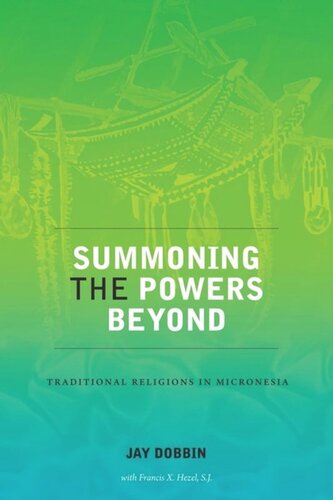

Most ebook files are in PDF format, so you can easily read them using various software such as Foxit Reader or directly on the Google Chrome browser.
Some ebook files are released by publishers in other formats such as .awz, .mobi, .epub, .fb2, etc. You may need to install specific software to read these formats on mobile/PC, such as Calibre.
Please read the tutorial at this link: https://ebookbell.com/faq
We offer FREE conversion to the popular formats you request; however, this may take some time. Therefore, right after payment, please email us, and we will try to provide the service as quickly as possible.
For some exceptional file formats or broken links (if any), please refrain from opening any disputes. Instead, email us first, and we will try to assist within a maximum of 6 hours.
EbookBell Team

5.0
18 reviewsSummoning the Powers Beyond collects and reconstructs the old religions of preindustrial Micronesia. It draws mostly from written sources from the turn of the nineteenth century and the period immediately after World War II: reports of the Hamburg South Sea Expedition of 1908–1910, articles by German Roman Catholic missionaries in Micronesia included in the journal Anthropos, and reports by the Coordinated Investigation of Micronesian Anthropology (CIMA) and the American Board of Commissioners of the Foreign Missions (ABCFM). A detailed introduction and an overview of Micronesian religion are followed by separate chapters detailing religion in the Chuukic-speaking islands, Pohnpei, Kosrae, the Marshall Islands, Yap, Palau, Kiribati, and Nauru. The Chamorro-speaking group of the Marianas is omitted because lengthy periods of intense military and missionary activity eradicated most of the local religion. The Polynesian outliers Nukuoro and Kapingamarangi are discussed at the end primarily to underscore the contrasts between Polynesian and Micronesian religion.
In a concluding chapter, the author highlights the similarities and differences between the areas within Micronesia and then attempts an appreciation or evaluation of Micronesia religion. Finally, he addresses the evidence of a tentative hypothesis that Micronesian religion is sufficiently different from that of Polynesia and Melanesia to justify the continued claim of a separate Micronesian religion.